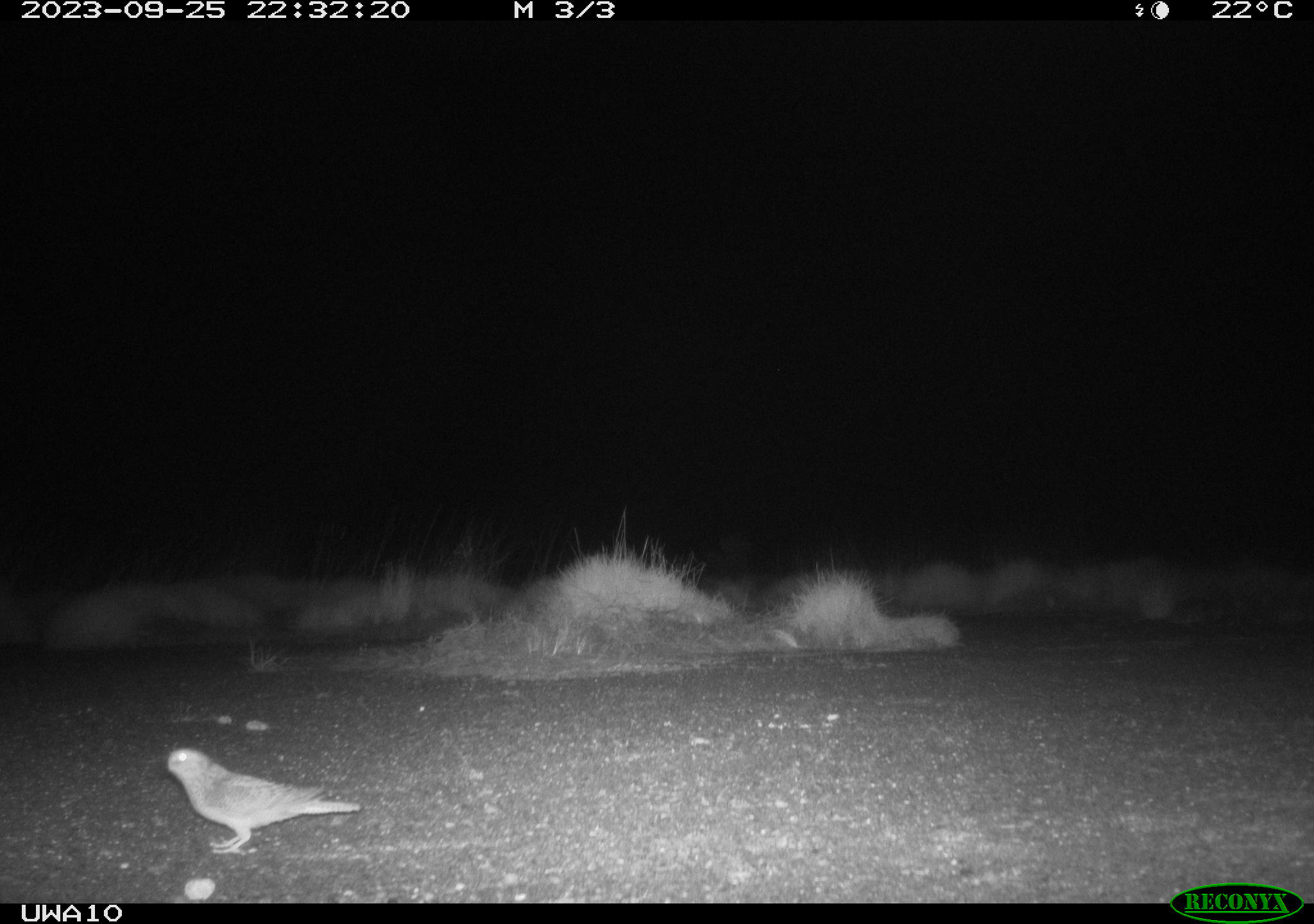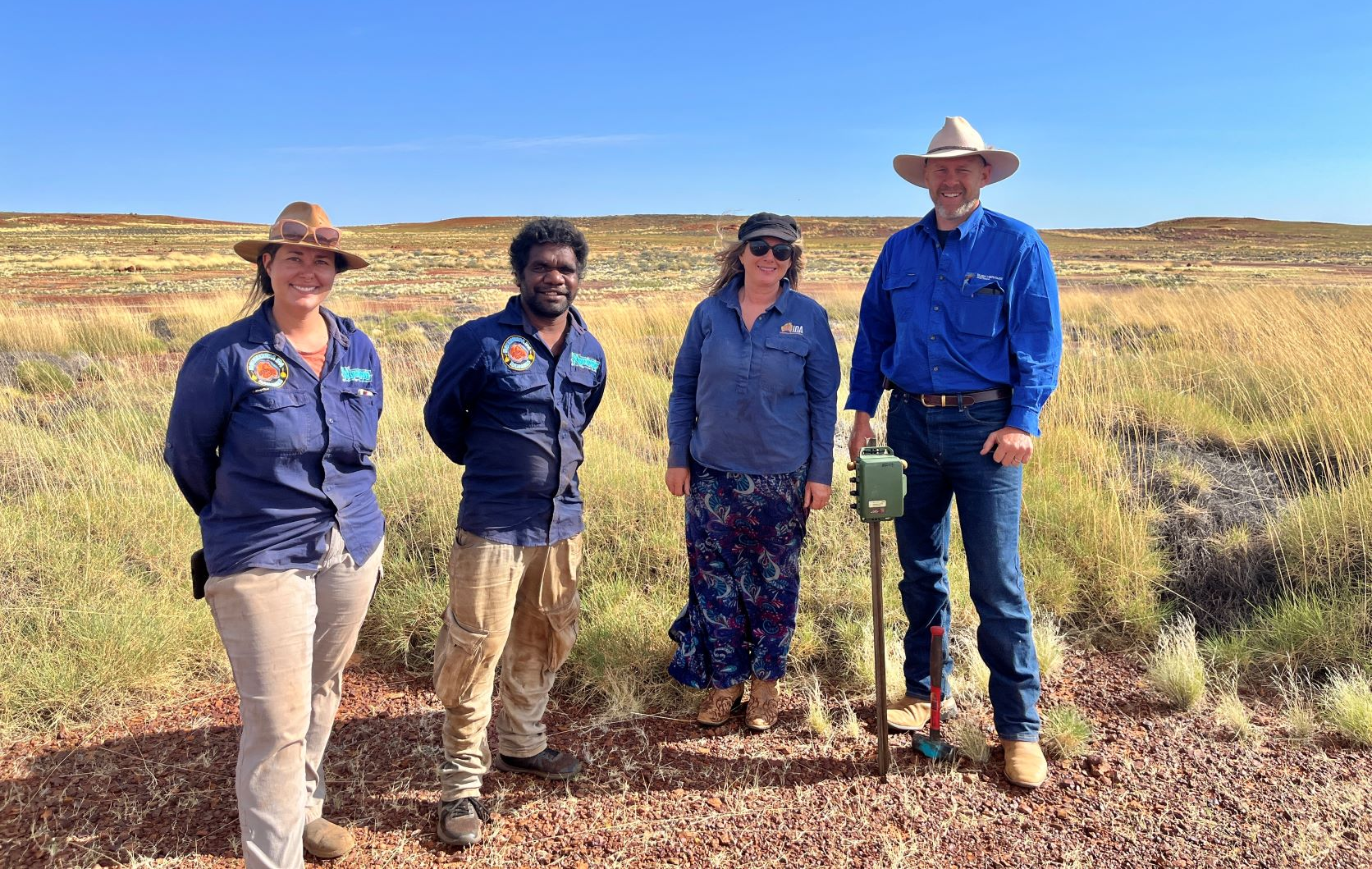An estimated 50 night parrots (Pezoporus occidentalis) survive in a newly discovered colony in a remote area of Western Australia, more than doubling population estimates for colonies of a bird thought extinct for decades. Although the discovery greatly increases the chance of saving the parrot with one of the planet’s most unusual avian lifestyles (despite nocturnal living, it seems they don’t actually have great night vision), it remains critically endangered, and the finders are calling for more help to save it.
A few years ago it had been so long since the Ngururrpa people had seen or heard a night parrot that its place in their culture had almost been forgotten. Ngururrpa authors on a paper reporting its rediscovery within the Ngururrpa Indigenous Protected Area write that “We thought they were only living in one area, on our neighbour’s country.”
Nevertheless, Ngururrpa rangers and university scientists placed acoustic recorders known as songmeters at 31 sites across a vast area of the eastern Pilbara, one of the most remote and sparsely inhabited areas on Earth. Seventeen of these sites recorded the parrot’s night-time call. By searching at the most promising sites, rangers and scientists came across an old nest and some feathers, as well as sometimes hearing the bird calls themselves and photographing one with a camera trap.

A bird that only comes out at night in one of the least populated place on Earth is hard to photograph, but this camera trap captured one.
Image Supplied: Dr Rachel Paltridge
The recordings revived stories about how the parrot’s eerie call was once used by Ngururrpa parents to discourage children from straying too far from campfires, telling them it was the sound of evil spirits. The tale is one example of how collaboration between scientists and Ngururrpa rangers could help save both the local ecology and the Ngururrpa’s threatened cultural heritage.
A hit rate of more than half may make it seem the night parrot is thriving, but the sites were carefully chosen. The team looked for places with types of spinifex (an Australian grass), similar to those where night parrots have been found in Queensland, and where cats appear to be rare. That combination appears to be essential for night parrots, and it accounts for only a small portion of their former range.

Authors Angus Reid, Clifford Sunfly, Rachel Paltridge and Nick Leseberg with a songmeter that recorded the night parrot’s call.
Image Supplied: Dr Rachel Paltridge
Dr Rachel Paltridge of the Indigenous Desert Alliance told IFLScience: “We’ve never flushed [a parrot] out when walking past a nesting site.” In years of study the only time scientists or rangers saw parrots was on the second last trip when one “Flew into camp and landed in front of rangers.” Although Paltridge says they “got a good look,” even a generation used to Instagramming everything didn’t reach for their cameras in time to photograph the bird.
The Parrot Of The Night
When owls evolved to hunt in darkness they developed a wide array of specialist features, such as exceptional eyesight and noise-cancelling wings. Parrots have no such features, and are usually very much creatures of daylight. However, in the arid Australian center, where daytime temperatures above 40°C (104°F) are the norm the heat is a major impediment. Night parrots opted to keep cool, a different reason from the world’s only other nocturnal parrot, the equally endangered but far more famous Kakapo. One study of their eyes indicates relatively small changes compared to other parrots.
With sightings so sparse Paltridge told IFLScience, “There’s very little detail on their biology.” Nevertheless, one Queensland parrot died from flying into a fence. Paltridge said that in the flat and treeless landscape the parrots inhabit, being able to see where you are flying might not be that important, or wasn’t until humans put obstacles in the parrots’ way.
Whatever changes the parrots made to be active at night worked for a long time; when Europeans discovered the night parrot in the 19th century, their habitat covered a vast area of Australia. Then came the cats. By 1979, no night parrot had been sighted for 67 years, and the bird was suspected to be extinct. After several reports in 1979-80, confirmation of the bird’s survival came in 1990, ironically from the discovery of a recently dead specimen. The first live population was found in 2013.
The parrot’s rediscovery has been one of the great stories of endangered species survival, but confirmed sightings remain rare. With well over a thousand kilometers separating one rediscovery site in western Queensland, and another in Western Australia phrases like “few and far apart” could hardly be more accurate.
The distance between the known parrot locations provides a little insurance against local threats, but also means both populations are under extreme danger of inbreeding. The new discovery lies between the previous sites, but is still much too far from the Queensland habitat for the ground-dwelling parrots, thought to fly no more than 30 kilometers (19 miles) for water or to seek a mate.
Threats And Hopes
The authors conclude dingoes are key to the night parrots’ survival. There is no evidence dingoes eat the parrots, but they certainly eat cats, thus acting as the parrots’ protector. Their role in keeping down fox populations may help as well. Maintaining dingo populations appears to be one crucial step for night parrot survival.
The newly discovered colony faces a threat the better-studied Queensland one does not, however, because its lands are much more fire-prone. Rangers conduct small burns to lower fuel loads and prevent vast conflagrations that could wipe out a colony in one go. The finding team recommends these continue, but with timing and locations adjusted for the bird’s safety.
The paper also includes requests from the Ngururrpa rangers for more equipment to improve knowledge of where the parrots are. Eventually, they hope to capture and tag some, revealing their movements and particularly where they go for water during the long dry season. This, Paltridge told IFLScience, would allow for more targeted predator controls.
Besides fire and introduced predators, the parrots may be threatened by the disruption of feral camels. The consequences of global heating on the parrots are unknown, but in one of the hottest bird habitats on Earth, they’re unlikely to be good.
The study announcing the colony is published in Wildlife Research.
Source Link: Largest Colony Of Night Parrots, One Of The World’s Rarest Birds, Discovered